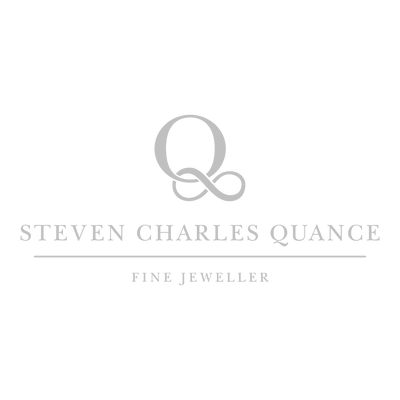Understanding the 4Cs of Diamonds
1. What do the 4Cs of diamonds stand for?
The 4Cs—Cut, Clarity, Colour, and Carat—are the universal standard for assessing diamond quality. Developed by the Gemological Institute of America (GIA) in the mid-20th century, the system provides a consistent way to evaluate beauty, rarity, and value. Cut refers to how well a diamond’s facets interact with light, affecting sparkle and brilliance. Clarity measures internal inclusions and external blemishes that impact the stone’s appearance. Colour grades diamonds from colourless to light yellow or brown, with less tint generally more prized. Finally, Carat denotes the stone’s weight, which influences size and cost but not necessarily beauty. Understanding the 4Cs allows buyers to make informed decisions, balancing aesthetics, durability, and budget.
2. Why is a diamond’s cut considered the most important C?
The cut is critical because it determines a diamond’s brilliance, fire, and overall visual appeal. A well-cut diamond reflects light internally and externally to create maximum sparkle, making it appear larger and more lively than a poorly cut stone of the same carat weight. Even a flawless diamond with high clarity and colour may look dull if the cut is subpar. Popular cut styles include round brilliant, princess, and cushion, each affecting light performance differently. Investing in an excellent cut ensures that the diamond’s beauty is optimised, often outweighing the impact of size or clarity when choosing a stone.
3. How does diamond colour grading work?
Diamond colour is graded on a scale from D (colourless) to Z (light yellow or brown). Colourless diamonds (D–F) are rare and highly valued, while near-colourless stones (G–J) offer excellent appearance at a lower cost. Colour affects not only visual appeal but also how light interacts with the stone, influencing brilliance. Advanced grading is performed under controlled lighting by expert gemologists, who compare stones against master samples. While colourless diamonds are ideal for purity and sparkle, personal preference, ring metal, and budget often guide final choice.
4. What is diamond clarity and why does it matter?
Clarity measures internal inclusions and surface blemishes. These imperfections can range from microscopic flecks to visible flaws, influencing beauty and value. The clarity scale runs from Flawless (no imperfections under 10× magnification) to Included (I1–I3), where inclusions are visible to the naked eye. Most inclusions are minor and do not affect daily wear. Clarity matters because it affects both appearance and price; higher-clarity diamonds are rarer and more expensive. However, many buyers find a slightly lower clarity grade more cost-effective without sacrificing visual beauty.
5. Does carat weight always determine a diamond’s size?
Carat refers to a diamond’s weight, with one carat equalling 0.2 grams. While weight contributes to apparent size, it is not the sole factor. Cut proportions, depth, and shape greatly influence how large a diamond appears when set. For example, a shallow-cut stone may appear larger than a deeper-cut diamond of the same carat weight. Carat impacts price significantly, but the balance of cut, clarity, and colour often results in a more beautiful and proportionate diamond for less money.
6. How do the 4Cs influence a diamond’s price?
All 4Cs contribute to a diamond’s value. Larger carat weight and superior clarity or colour command higher prices due to rarity. Cut affects perceived beauty, meaning a well-cut diamond can appear more valuable than its measurements suggest. Pricing is a complex interplay: two diamonds of equal carat weight can differ dramatically in cost depending on cut, clarity, and colour. Understanding how the 4Cs interact helps buyers maximise visual appeal without overspending.
7. Which C should you prioritise when buying a diamond on a budget?
When budget is limited, cut is the most important factor to prioritise. A well-cut diamond appears more brilliant and lively, making other imperfections less noticeable. After cut, buyers often balance clarity and colour based on personal preference and what is visible to the naked eye. Carat can be slightly reduced to remain within budget while maintaining sparkle. Prioritising cut ensures that the diamond looks stunning without requiring the highest grades in all four categories.
8. How can you detect flaws or inclusions in a diamond?
Flaws and inclusions are usually visible only under magnification. Jewelers use a 10× loupe to inspect internal and surface imperfections, noting their size, location, and impact on brilliance. Some inclusions, like feathers or crystals, can weaken the stone, while minor pinpoints have minimal effect. For buyers, it is essential to compare diamonds side by side, considering both aesthetics and structural integrity. In many cases, inclusions are hidden by prongs or settings, making them practically invisible in daily wear.
9. Are diamond lab reports essential when buying?
Lab reports from recognised institutions such as GIA or IGI provide independent verification of a diamond’s 4Cs. These certificates ensure transparency, allowing buyers to understand exactly what they are purchasing. Lab reports reduce the risk of misrepresentation and provide confidence in value, quality, and authenticity. While reputable jewellers often offer their own assessments, certified reports remain the gold standard for trust and resale purposes.
10. How do jewellers grade diamonds differently from lab reports?
Jewellers may offer in-house grading based on experience, visual inspection, and standard tools. However, human assessment can vary, and grading may be less precise than official lab reports. Labs like GIA employ strict, standardised protocols, controlled lighting, and multiple expert evaluations to produce consistent, impartial results. While jeweller assessments are helpful for guidance and initial comparison, buyers seeking verifiable quality and resale assurance should rely on certified reports to complement professional advice
